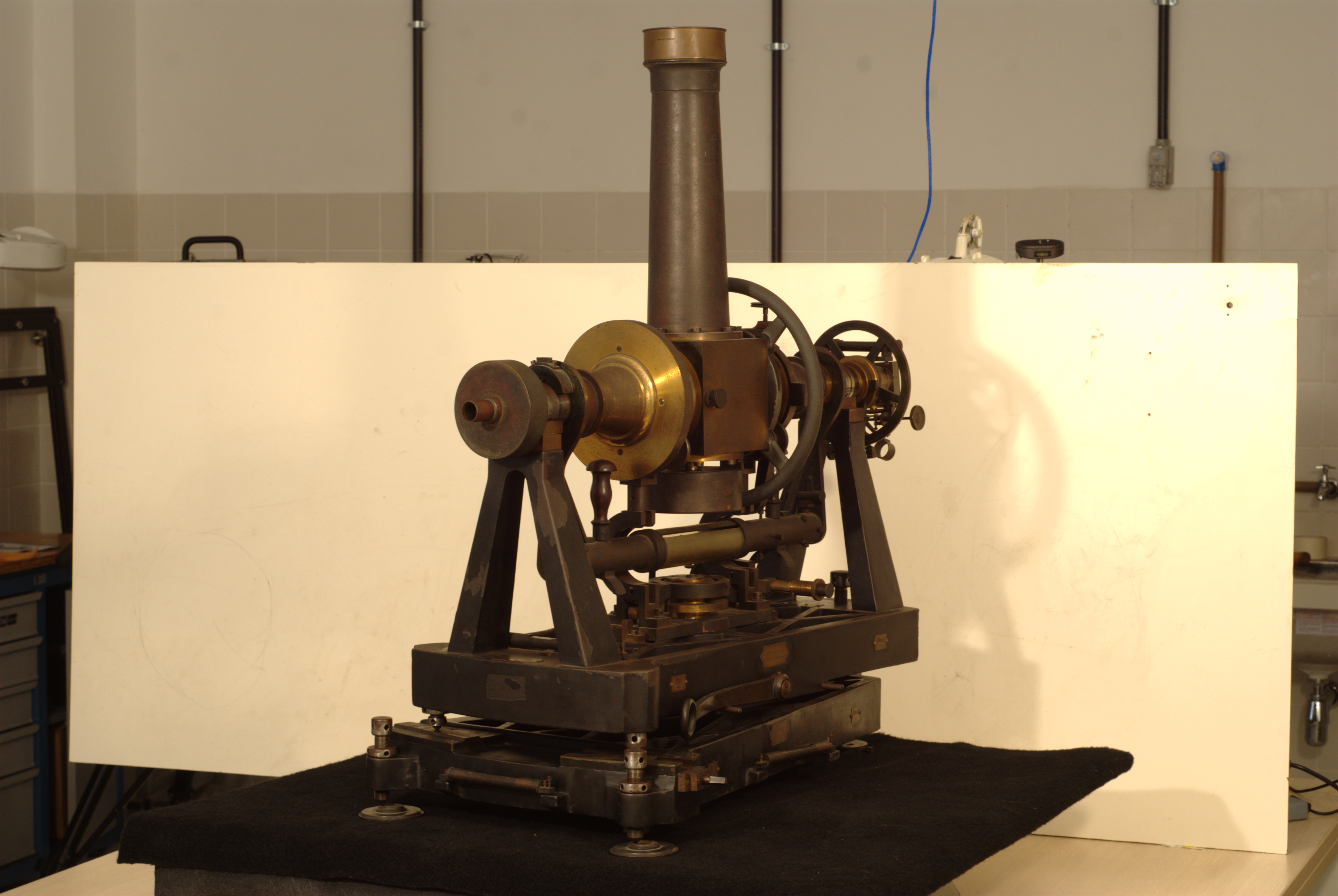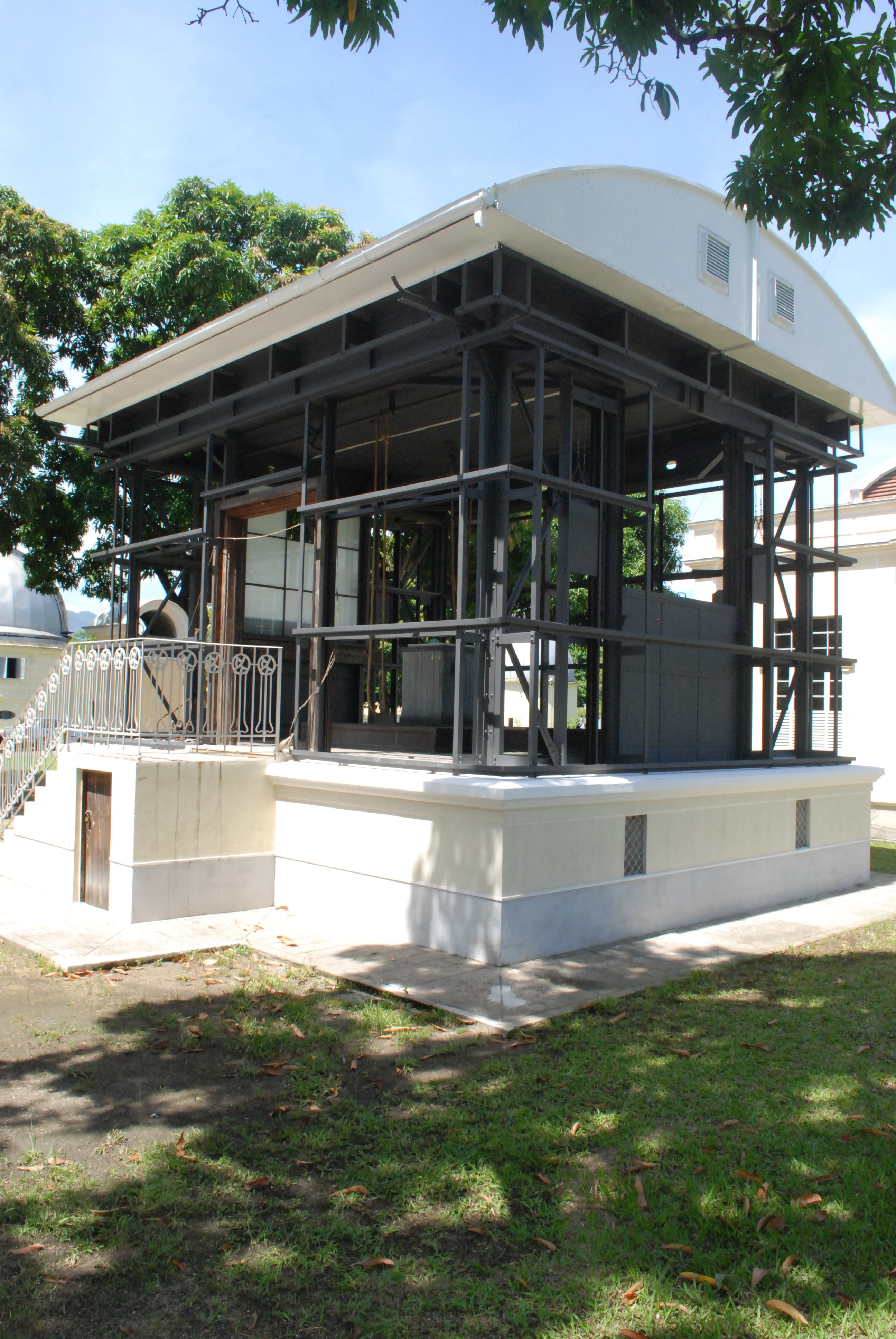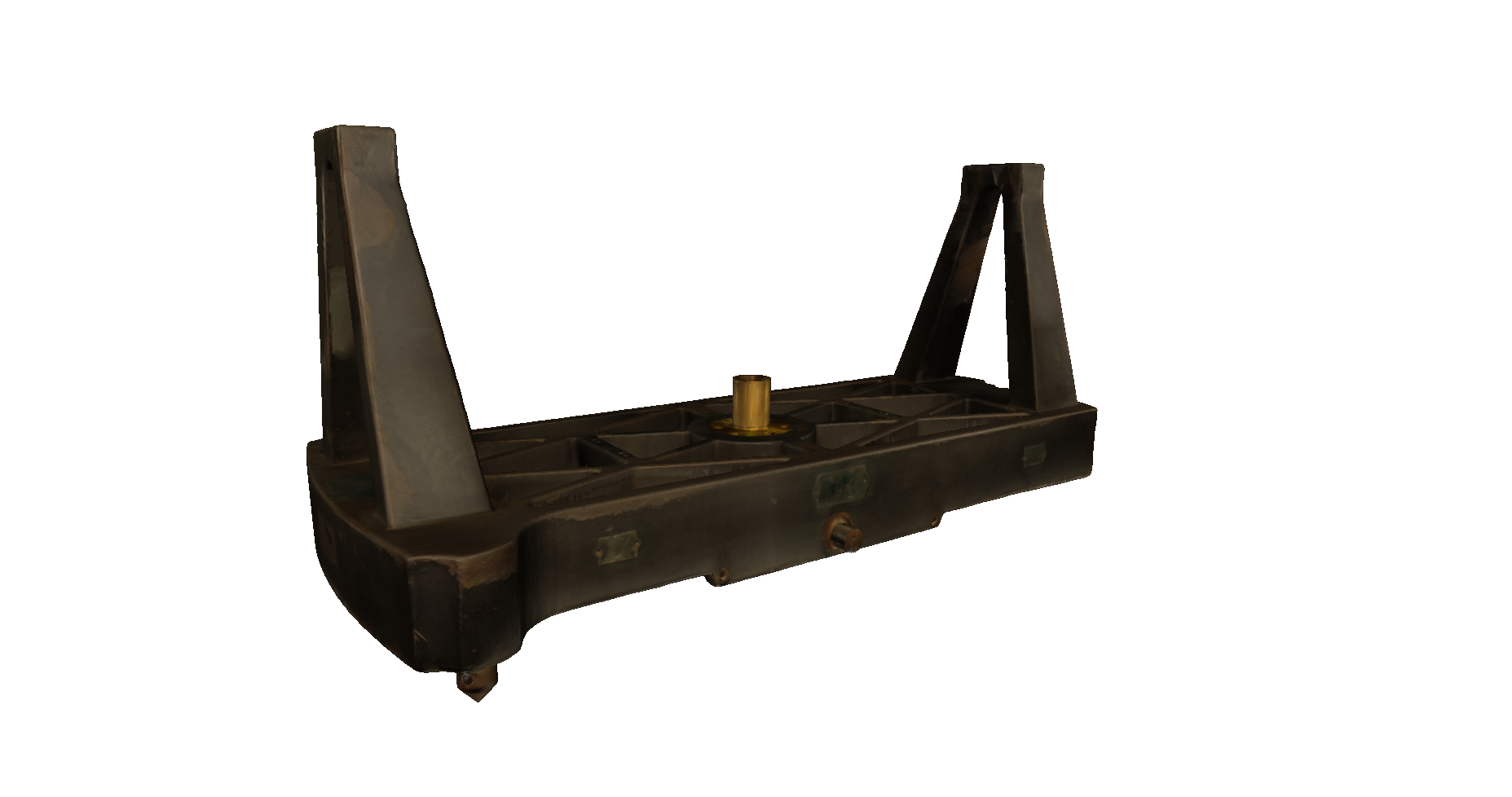The Museum of Astronomy and Related Sciences (MAST) at Rio de Janeiro holds an important collection of historic scientific instrument. It is located at the old city observatory, together with a research center for astronomy and related sciences, and today it is the most important Brazilian museum of the kind. The meridian circle Bamberg is part of MAST's collection, and was active instrument during many decades before being transfered to the museum. It was in use by the observatory until the 70's, and for many years was responsible for determining the legal hour in Brazil through the observation of specific planets and stars that crossed the meridian established by the observatory.
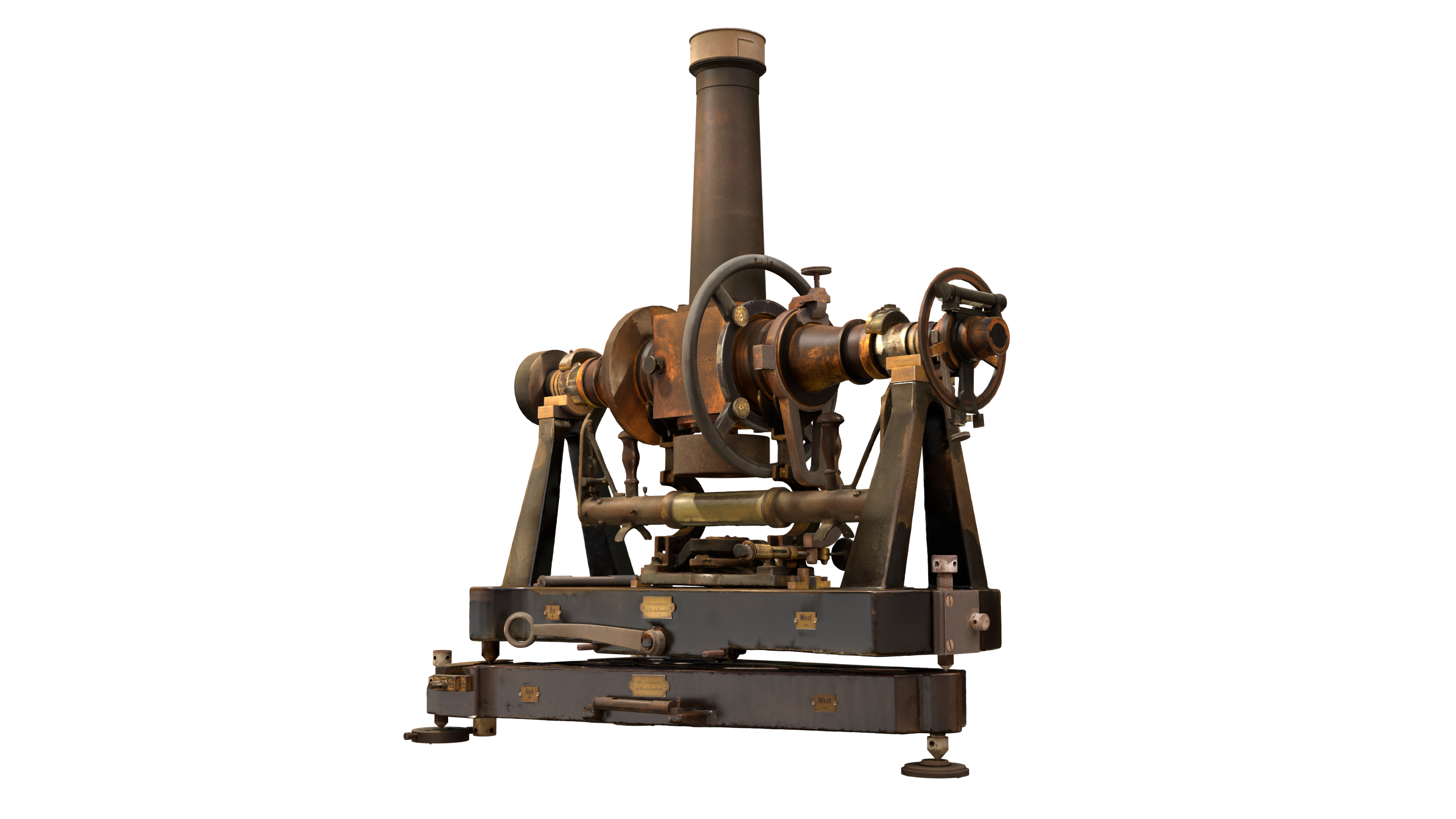
The Bamberg Meridian Circle
MAST collection
The Bamberg Project
an interdisciplinary campaign
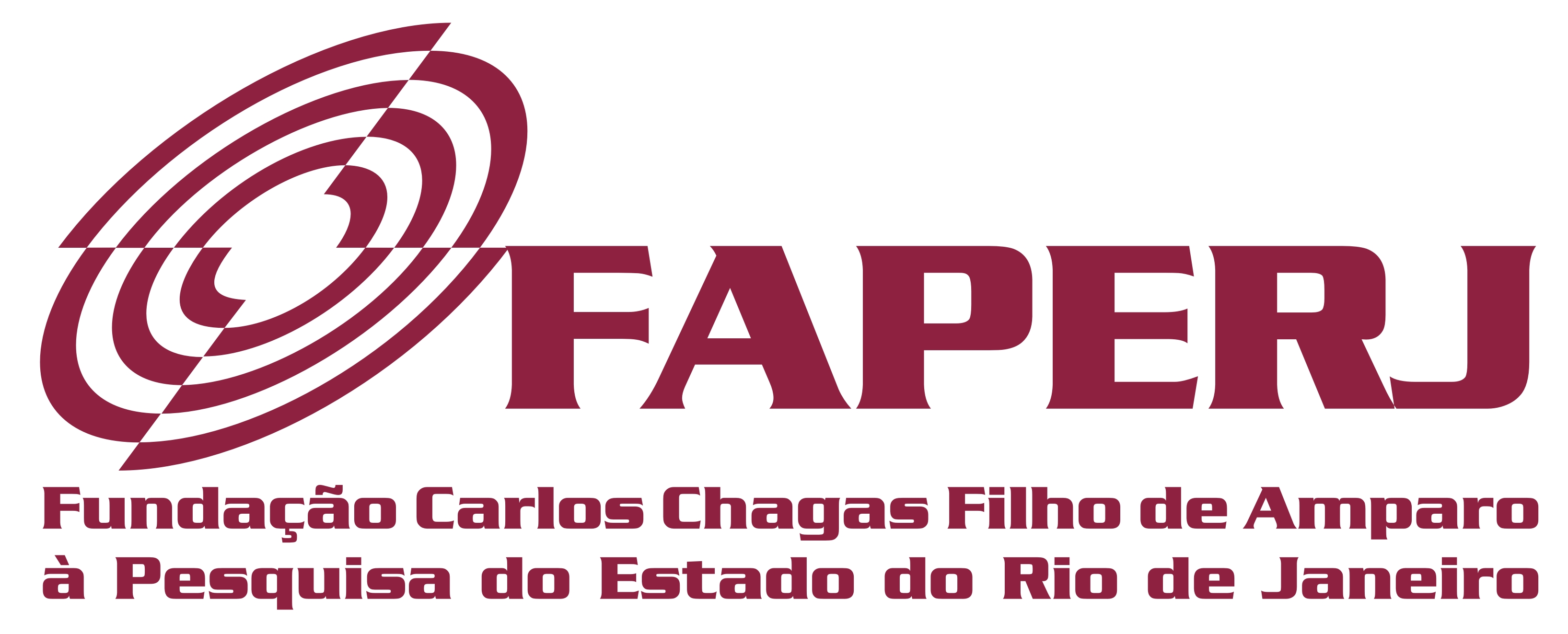

The Digital Bamberg project was a joint collaboration between the Computer Graphics Lab at PESC/UFRJ, and the Museum of Astronomy and Related Sciences (MAST). The project was fiananced by Brazilian funding agencies Faperj and CNPq.
It combined the challenges of creating a digital replica of a scientific instrument, that, at the same time, is part of the museum collection and, hence, is treated as an historical artifact. To preserve all the details, the instrument was disassembled and each part was digitized separately. The final model contains over 100 parts.
Related Publications
- Digitizing 3D Historical Scientific Instruments with Laser and Photographic Technologies Ricardo Marroquim, Daniel Coutinho, Marcus Granato, Lights on? Cultural Heritage and Museums!, Porto: LabCR | FLUP, 1st ed, pages 193-211, ISBN 978-989-8648-98-3, December 2016, pdf
- Conservação-restauração da Luneta nº 10783 de Bamberg Márcia Pinheiro Ferreira - Dissertação de Mestrado, Programa de Pós-Graduação em Preservação de Acervos de Ciências e Tecnologia, MAST 2017 pdf
- Research On Metal Objects Conservation in MAST: A Strategic Area For Museums in Brazil Marcus Granato, Guadalupe do Nascimento Campos, Ricardo Marroquim, XVI Encontro Nacional de Pesquisa em Ciência da Informação (XVI ENANCIB), 2015 pdf
- 3D Digitalization of Scientific Instruments – The Case of the Bamberg Meridian Circle Ricardo Marroquim, Felipe Moura de Carvalho, Matteo Dellepiane, Antonio A. F. Oliveira, XXXI Symposium of the Scientific Intruments Commission, MAST, 2012
The Digital Bamberg Project was part of the Reshaping History Exhibition at FGV, Rio de Janeiro, in 2014. The 3D Print of the Bamberg was also exhibited at the Imprimindo o Futuro Exhibition at MAST, 2017.
The Digital Model
some images of the digital model
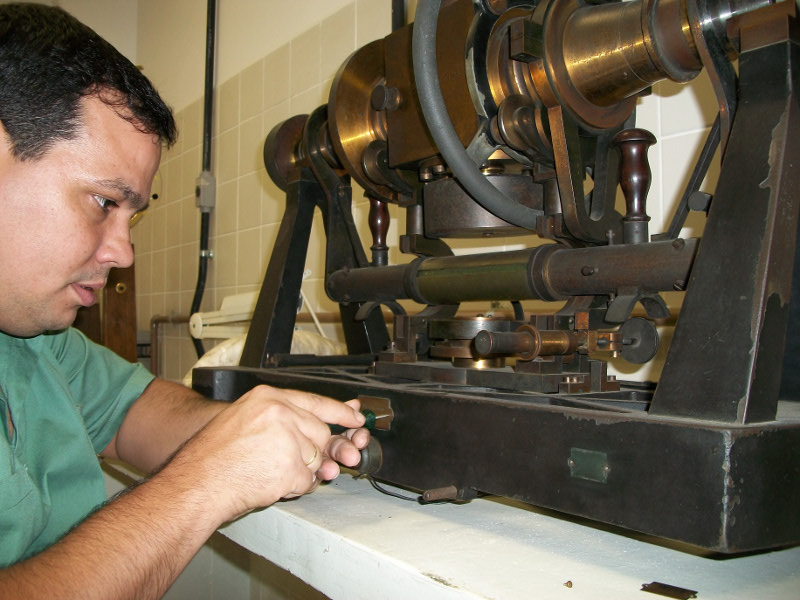
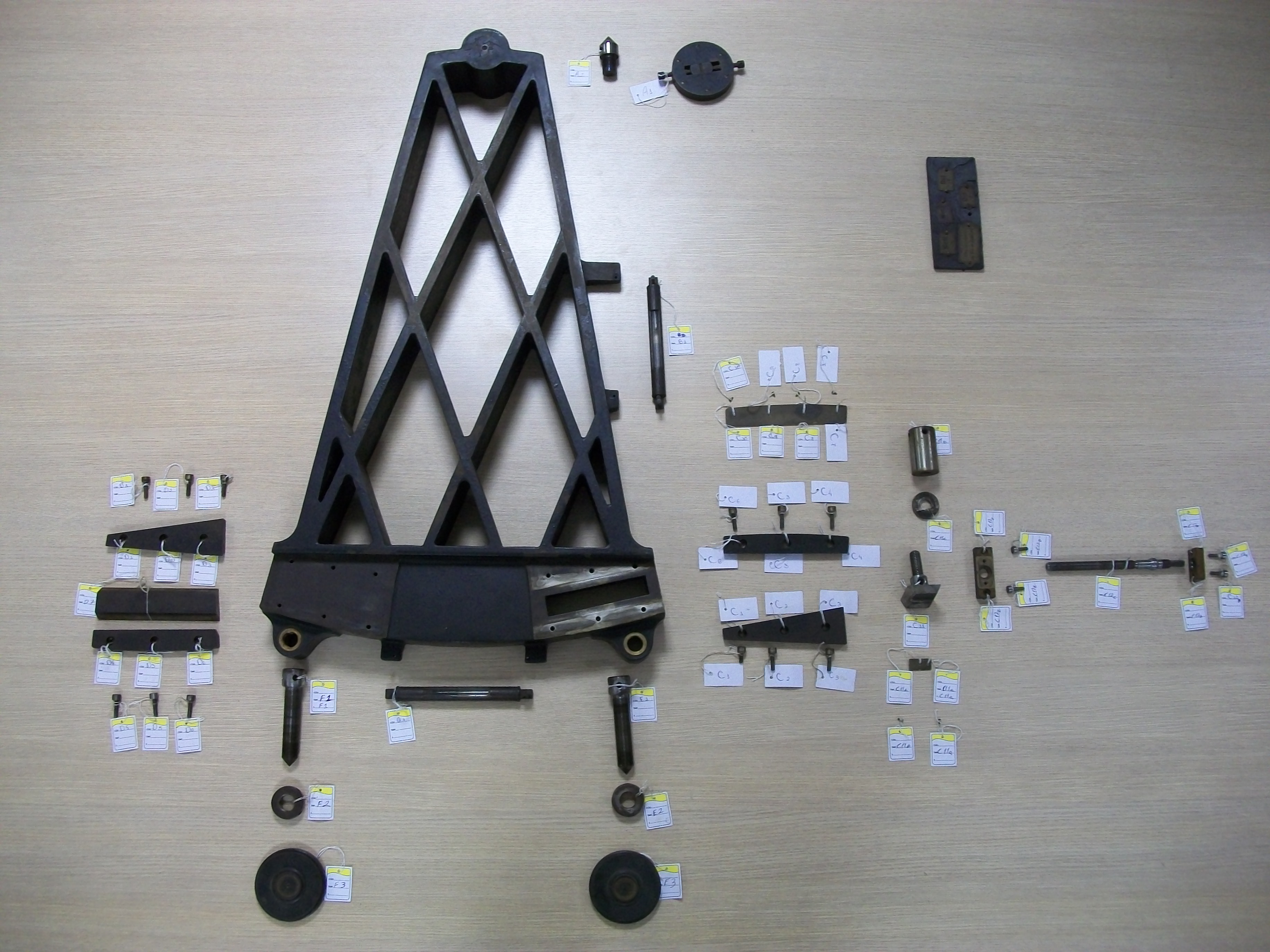
Disassemble
The Bamberg was carefully disassembled to digitise its parts. Technicians from the museum were responsible for the manipulation and disassemble of the historic instrument.

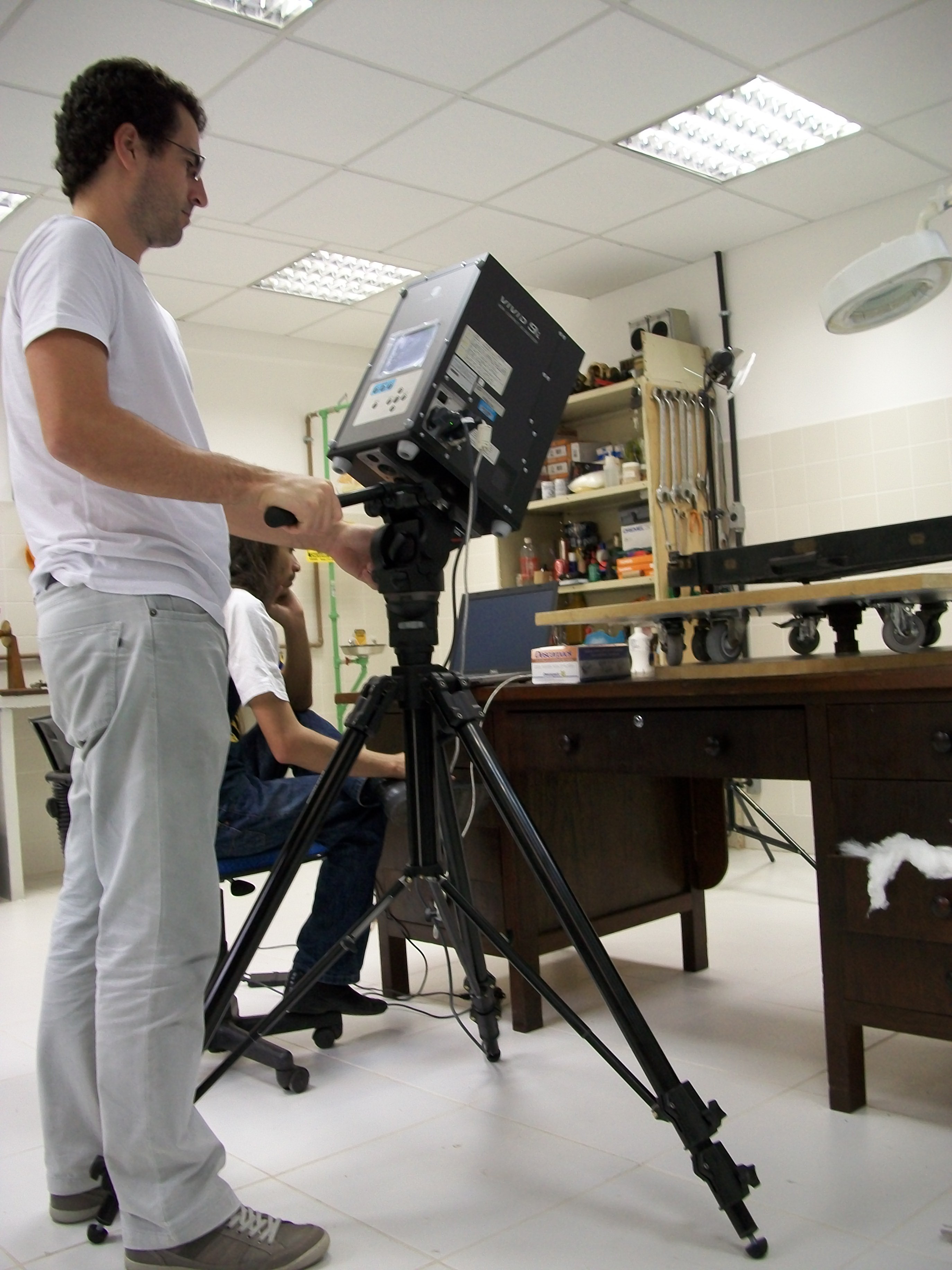
Geometry acquisition
The geometry was acquired with two different methods. Some pieces were cdigitized with a Konica Minolta Vivid 9i laser scanner. However, since highly specular and symmetrical surfaces present a great challenge for passive devices, some pos-processing was necessary to obtain a smooth model. Other parts, specially smaller ones, were modeled manually by precisely measuring their dimensions and using CAD modelers to obtain the final digital representation.
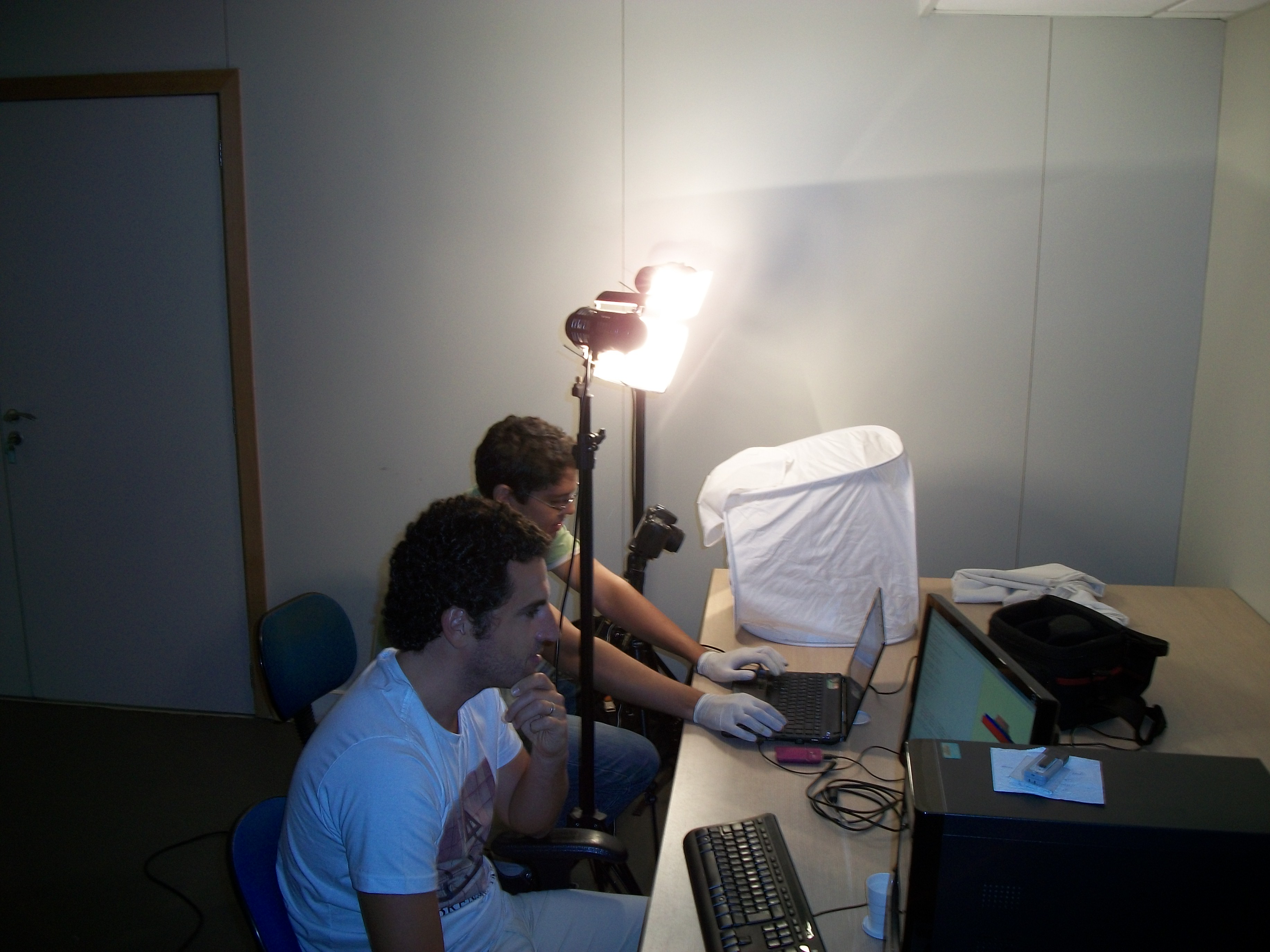
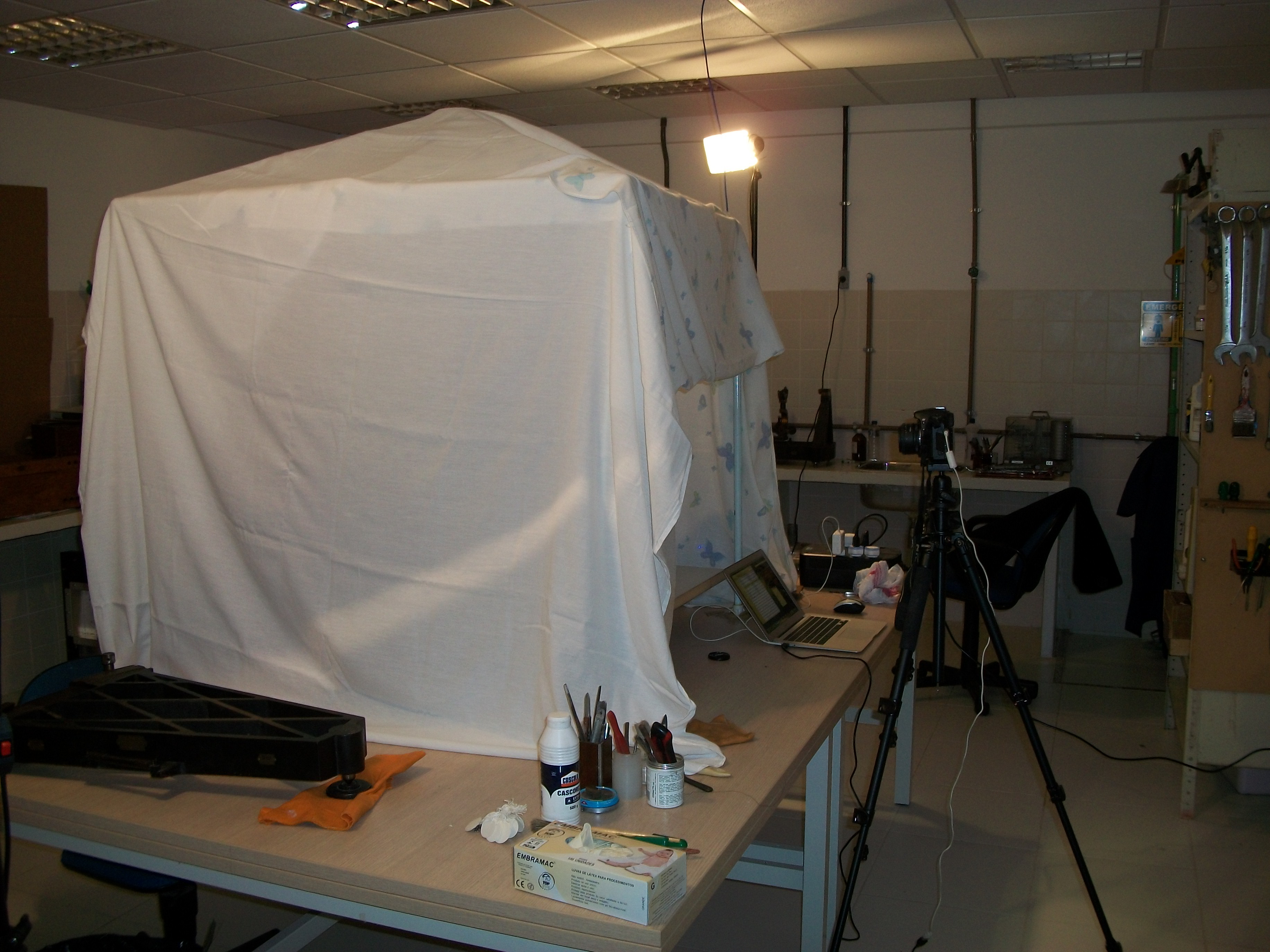
Color acquisition
Each piece of the instrument was densely photographed to create a color textured model. The lighting environment was as controlled as possible to avoid transporting specular highlights to the textures.
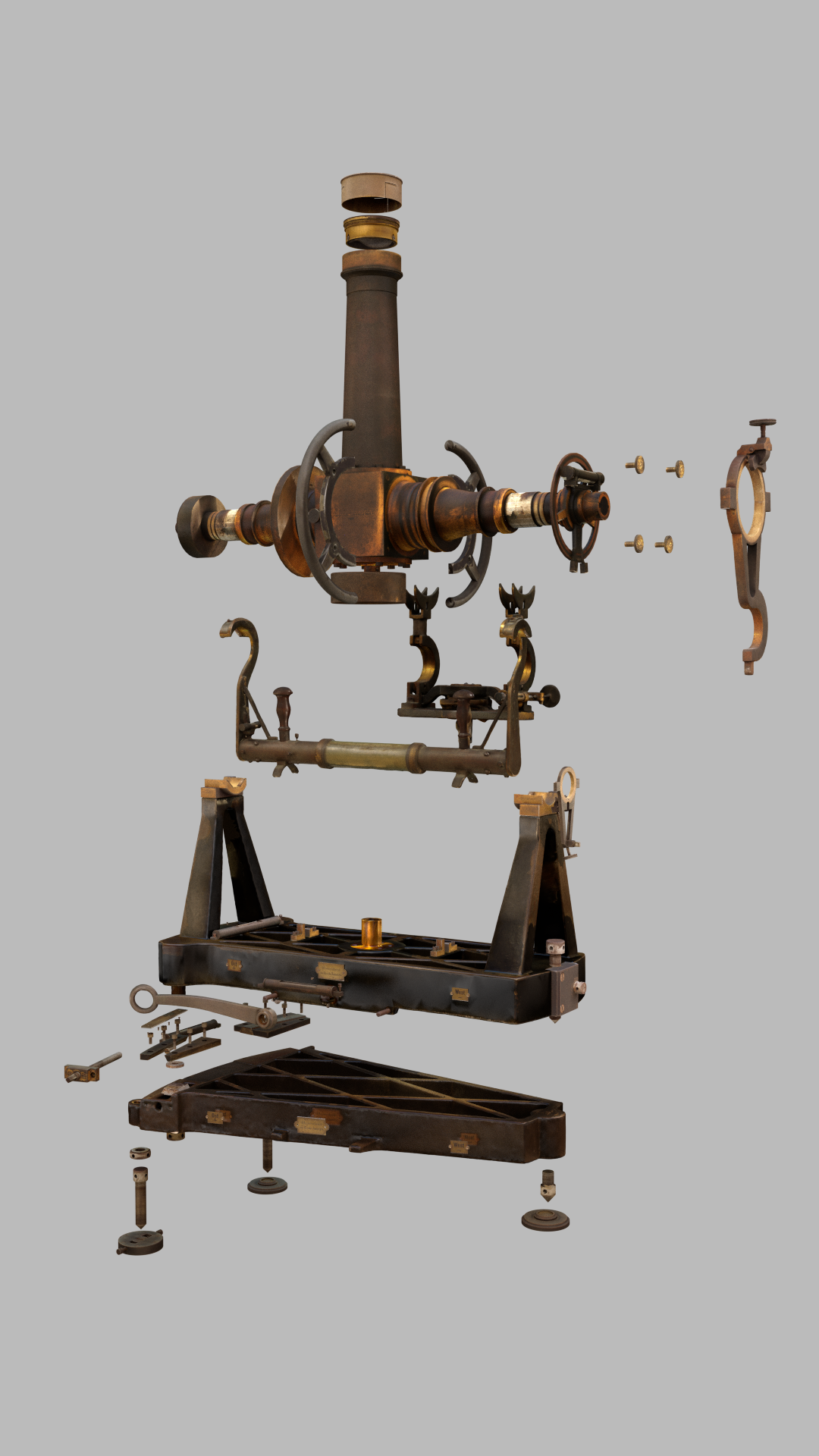
Final 3D model
The 3D model was then digitally reassembled respecting the original instrument's mechanisms.

3D Print
A 1:5 replica was printed in polyamide and used as a placeholder for the exhibitions.

